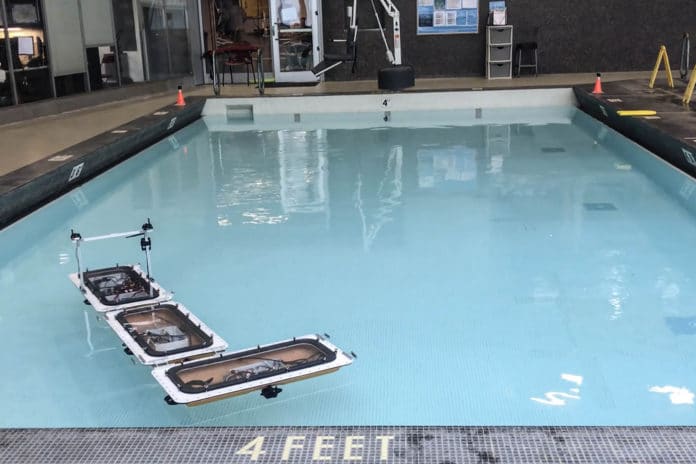For the past several years, MIT researchers have collaborated with Amsterdam officials to develop the world’s first fleet of autonomous floating vessels (Roboat) for the city of Amsterdam.
In their last update on Roboat, researchers announced that they created an autonomous latching mechanism that lets the boats target and clasp onto each other and keep trying if they fail. And now, they have updated the fleets with another capability that allows them to change configurations and reassemble with one another to form a range of new structures.
The team created a new algorithm that lets Roboats smoothly reshape itself as efficiently as possible. It manages all the planning and tracking that enables groups of Roboat units to unlatch from one another in one set configuration, travel a collision-free path, and reattach to their appropriate spot on the new set configuration.
They then demonstrated this working with roboats both in an MIT pool and in computer simulations, where groups of linked roboat units rearranged themselves from straight lines or squares into other configurations, such as rectangles and “L” shapes.
It took only a few minutes for the transformation. The team explains that more complex shapeshifts may take longer, depending on the number of moving units and differences between the two shapes.
Giving each unit unique capabilities – like locating each other, agreeing on how to break apart and reform, and then moving around freely – would require complex communication and control techniques that could make movement inefficient and slow. To enable smoother operations, the team developed two types of units – coordinators and workers. Both units have four propellers, a wireless-enabled microcontroller, and several automated latching mechanisms and sensing systems that enable them to link together.
However, the coordinators include GPS and a measuring tool for determining their relative pose and velocity. And the workers only have actuators that help the CVP steer along a path. The coordinators work together to determine their current arrangement and compare that to the target arrangement. They then issue orders about which ones stay in place and which ones must change position to achieve that new shape given their starting point.
The experiment was performed on the Roboats about 3 feet by 1.5 feet in size; the full-sized roboats are about four times that size. However, researchers think the algorithm will work when applied to them, too.
The team also hopes to use the Roboats to form a dynamic bridge across a 60-meter canal between the NEMO Science Museum in Amsterdam’s city center and an area that’s under development.
“A set of boats can come together to form linear shapes as pop-up bridges if we need to send materials or people from one side of a canal to the other. Or, we can create pop-up wider platforms for flower or food markets,” says Daniela Rus in a release.
